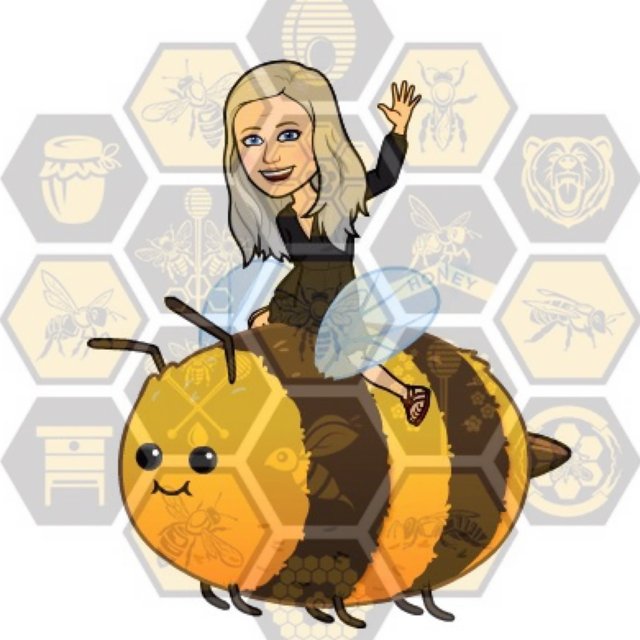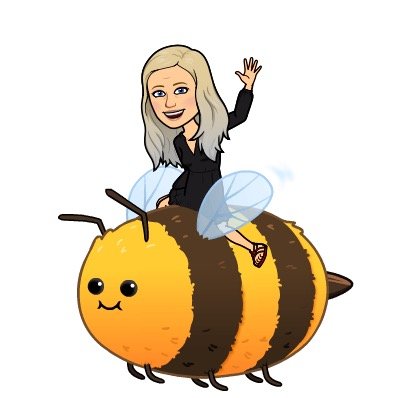BEE-CAREFULL HIVE NATION IS ON THE MOVE

image: 123RFstockphoto
Movements all around! Not only in the offline real world but also on the chain. The blockchain, some say sun blockchain, and the new BEE 🐝 ON THE BLOCK : HIVE , 100,000 eyes, 200,000 wings and 300,000 feet. During the high season in early March, is this a sign? Do we all need to fly away.
“The Hive“ and the Dutch HIVES I already knew but this new movement and chain is new. The new home to many I read. Tomorrow is the day they will fly away from sun and move to the open doors to this new nation. Please let it BEE a Hive without Cvirus and free of war. It’s do able BEE NICE , HIVE FIVE , I am ready for the dive.
For those of you not familiar to the bee world and new hive know it alls. I searched and found all the information needed.
100,000 compound eyes, 200,000 wings and 300,000 feet. During the high season in early summer, a colony of honey bees in a beehive consists of up to 50,000 "citizens". What at first glance looks like a big mess is really a well-organized super-organism. All members of the community - queen, worker bee or drone - pursue the same goal: the survival of the colony and its descendants. To achieve this goal, the honey bees are divided into clearly distinct activities. Each colony always has only one queen. She lives a maximum of five years and is the only one who provides offspring at that time. She guides her inmates in the beehive with a physiological drug; the queen fabric. Like the worker bees, the queen initially arose from a fertilized egg. Throughout the larval stage, they are kept in a royal cell by nurse bees and fed on a diet; the nutritious royal jelly or royal jelly.
When the queen first comes into action after about 16 days, she uses her sting for the first and last time; she does that to kill her rivals - a community can have only one queen. Then she goes on a bridal flight with the drones and absorbs up to 10 million sperm cells in her spermatheca once. Then she lays up to 2,000 fertilized and unfertilized eggs per day in the designated brood cells; up to 200,000 eggs per season. The worker bees and the new queen emerge from the fertilized eggs, the unfertilized eggs yield drones.
In addition to laying eggs, the queen controls the state of affairs in the community through pheromones. The fabric supports the worker bees' learning behavior and keeps them together (even in a flock), suppresses ovarian development and the formation of new queens, and attracts drones during the breeding season.
Every year the queen gives way to a successor. Before leaving the hive with a swarm of thousands of bees at the beginning of summer, she lays eggs for her community in prepared queen cells. The new queen is born from this. The swarm gathers in a huge and bustling bunch and searches for a new home. This is to the delight of the beekeeper, who can remove the swarm from a tree and house it in a new beehive. The bees also benefit from this because honey bees cannot survive in the wild without housing.
Most bees in a hive are worker bees without whom the queen and drones could not exist. These barren female worker bees are initially fed only with royal jelly; in their later life they need honey, nectar or pollen, and a little water.
After 21 days, the mature worker bees come out of the cell, complete with a poisonous sting and small barbs for defense. From that moment on they can live up to their name "worker bees" and work until they drop! In the six weeks of their summer life, depending on their age, they perform almost all important tasks in the hive; in the calmer winter season she gets older.
A young bee stays in the hive for a maximum of the first three weeks of her life and cleans the cells, takes nectar and pollen from the fetch bees, feeds them to the old and young larvae, constructs new honeycomb from wax, regulates the temperature and humidity in the hive, and eventually becomes a guard at the entrance to the hive. It is only in the second half of her life that she mainly catches up, scouring the environment for nectar, pollen and water, and transporting these delicacies, which are necessary for them, to those who stay behind.
The male bees have a hard life in the honey bee community, and not only because they are significantly outnumbered. After hatching from the unfertilized eggs in the spring, the drones' only mission is to fertilize the queen. Initially they can take it easy, but in May, when the stingless drone is sexually mature, that will come to an end.
Then the drone in the so-called drone gathering places must constantly compete with thousands of other males in order to mate with a queen on her wedding flight. If he succeeds he consumes all his sperm and dies. In the summer, at the end of the bee year, the unsuccessful drones end up in social isolation. The worker bees refuse to feed them, ban them, or prevent them from returning to the community. A beehive is a true work of art and the home of honey bees. They are rarely found in the wild today - such as in hollow trees. Beekeepers generally provide accommodation for bee colonies; this housing is also known as beehive. A beehive consists of up to five boxes (frames) of wood or plastic stacked on top of each other, in which removable wooden frames are placed that serve as the basis for honeycomb structure. The entrance and exit is at the bottom. The top cover can be removed. The worker bees then independently construct a honeycomb from top to bottom in the wooden frames with beeswax produced in their bodies. The small excreted scales are kneaded in the mouth and mixed with a fluid from their glands. The honeycomb is then expanded seamlessly with wax prepared in this way.
About 125,000 scales are needed for 100 grams of beeswax. That amount is enough for about 8,000 cells in which the bees store pollen and honey and grow larvae.
This geometric and architectural wonder is not only for mathematicians. For a start, the cells are circular or cylindrical. Due to the heat of the bees themselves, the cells become warm and elastic and take on the most economical and efficient form from an energy point of view: the hexagon.
The young bees grow up in the center of the hive. When the larvae are old enough, the breeding cells are covered with a wax cover. The pollen is stored in the honeycomb cells next to and below the brood cell; these cells are not covered. At the top, the honey is stored in the honeycomb; these cells are covered. During most of the year, the temperature in the beehive is at an optimum temperature of 35 ° Celsius. The density of insects in a closed space creates ideal conditions for the spread of diseases. But the bees are well prepared for this. They make cement (propolis) from tree resin and pollen and use it to seal small holes, crevices and cracks, keeping out or killing pests. The inside of the brood cells is also covered with a thin layer of propolis. If it gets too hot in the nest, the bees at the entrance create a cooling airflow using wing movements. The cooling is enhanced by the evaporation of water supplied by the fetch bees. When it gets too cold in the nest, the bees (heat bees) raise the temperature in empty cells between the breeding cells with the help of muscle vibrations. A honey bee follows a fixed sequence of actions, depending on the location and the weather:
August / September: The care of the winter brood begins. By storing fat and protein reserves, these bees live longer and are better equipped to survive the winter. The drones are driven from the colony.
October - February: A cluster forms between different honeycomb spaces. The bees eat the stored honey, keep the queen warm and feed her. Offspring are cared for in late winter. As soon as the outside temperature rises above 10 ° C, the first reconnaissance flights take place. When the pollen is available, the offspring are raised.
March - April: The long-lived winter bees are replaced by young summer bees. If the bees bring in more food than they use, they will create storage areas. The raising of the drones begins, and the beekeeper starts harvesting honey.
May - July: The development of the bee population reaches its peak. The colony is creating queen cells and is preparing to split the community into swarms. Source :
http://www.bee-careful.com/nl/het-leven-van-bijen/de-bijengemeenschap/

So now you know it all. I just need you to read this too.
https://steempeak.com/communityfork/@hiveio/announcing-the-launch-of-hive-blockchain
SEE YOU ALL TOMORROW 🐝🐝🐝
Thank you for stopping by, its highly appreciated, and please let me know your vision on steemit life in general.
Please remember, focus on being creative instead of being busy!
- “Consistent Actions, Create Consistent Results”
- “Not everyone is a blogger, but everyone has something great to offer"


Lover of Life and L❤️ve in General - @brittandjosie


Member off the :
#heyhaveyamet #steemterminal #powerhousecreatives #needleworkmonday and #payitforward and on Discord @ brittandjosie3488
(c) All images and photographs, unless otherwise specified, are created and owned by me. @brittandjosie originals
Sources used : Pixabay and Pexels and with others its mentioned in my blog. I only use a canon camera and my iPhone.
I would like to thank You for Reading my blog but Feel free to leave me any feedback.

 If you want to learn more about either of these projects, please visit: @heyhaveyamet or @steemterminal
If you want to learn more about either of these projects, please visit: @heyhaveyamet or @steemterminal

#marlians, #neoxian, #creativecoin
#palnet #steemitmamas #powerhousecreatives #CC
#mediaofficials #steemterminal #heyhaveyamet #built-it
Wow! The hive hype is real huh! :O
And do like the move ?
Definitely a refreshing experience in the Hive side.
I'll for sure be active in the Hive space as well. <3 :)
Metoo
You got voted by @curationkiwi thanks to brittandjosie! This bot is managed by KiwiJuce3 and run by Rishi556, you can check both of them out there. To receive upvotes on your own posts, you need to join the Kiwi Co. Discord and go to the room named #CurationKiwi. Submit your post there using the command "!upvote (post link)" to receive upvotes on your post. CurationKiwi is currently supported by donations from users like you, so feel free to leave an upvote on our posts or comments to support us!
We have also recently added a new whitelist feature for those who would like to support CurationKiwi even more! If you would like to receive upvotes more than 2x greater than the normal upvote, all you need to do is delegate 50 SP to @CurationKiwi using this link.
Thanks for the advice... I can't wait till tomorrow, LOL!
@tipu curate
Upvoted 👌 (Mana: 15/20 - need recharge?)
And how do you like the hive on the fist 5 days?
There is a lot of turmoil in the hive and many bees have returned with renewed enthusiasm: I like it! 👍
Hi there
I've been reading through many comments related to new hive chain and I've seen your comment too. Many users are being torn, however majority seem to be moving to new hive.
Are you fully moving there or will you stay on both chains? Just curious. I'm trying to figure out what to do myself.
Personally I had already started the STEEM powerdown in January... I like the rebranding of Hive and I hope for a real change, albeit uncertain.
Cheers & !BEER
Big Thx for your reply. I think i will stick around on both chains for time being.
I also figured that you may find this post interesting and worth your time:
https://steemit.com/hive-175254/@project.hope/project-hope-curation-trail-on-both-chains-steem-and-new-hive
It's post published by good friend of mine and I'm helping him to promote their curation trail.
Thank you!
You are very welcome
Wow, wonderful information @brittandjosie. You've been a busy bee compiling all this. Thanks for your efforts to educate us. I feel a bit better knowing that while some of us such as myself don't have too much to do and only play a small part, there are others who will make sure the halls, walls, chambers, and everything else needed to keep the wheels greased, run smoothly, and know what the heck's going on.
Thanks for sharing this.
We hit day 5 on hive and do you like it
Yes, so far I like Hive. Still a few quirks and jerks to sort out. Looking forward to blogging and feeling at ease now.
Good. Im sure I'll see you buzzing around the Hive.
We cannot do without you
your discord link /invite above is broken/expired
Do you want a new one ?
sure, hook me up
https://discord.gg/XZGPGpz Ready to go
Wonderful post! I hope all us little bees manage to make lots of honey for our Hive!
The first five days on hive and what do you think ?
Besides the split personality thing (Steem + Hive), I have to give them credit for throwing together a almost-completely functioning blockchain in only a few days! They've definitely performed a miracle. Sure, there are still things that need to get put back into place, but it's like installing a fresh operating system onto an old, trusty computer... refreshing... a little disorientating at first until you get all your favorite programs installed. And that's what Hive is... our old blockchain with a clean face and clean bill of health.
You have received 5x upvotes from the members of @steemexplorers from your free link submission in our discord server. Steemexplorers is an initiative bringing information on various Steemit services and communities in a central discord to save you time and help you grow. It's free, it's easy, and it's here to help you in so many ways. Come by our discord to learn more! Link to Discord: https://discord.gg/6QrMCFq. Our team also offers an additional upvoting service called @givememonsters where you can presently trade in 1 to 10 DEC from the Steem Monsters game for up to $0.03 upvotes on ANY steemit posts. The vote purchasing value here is some of the best returns on your investments that you can find anywhere so come by and visit this service today!
This post has received a 3.13 % upvote from @drotto thanks to: @curationkiwi.